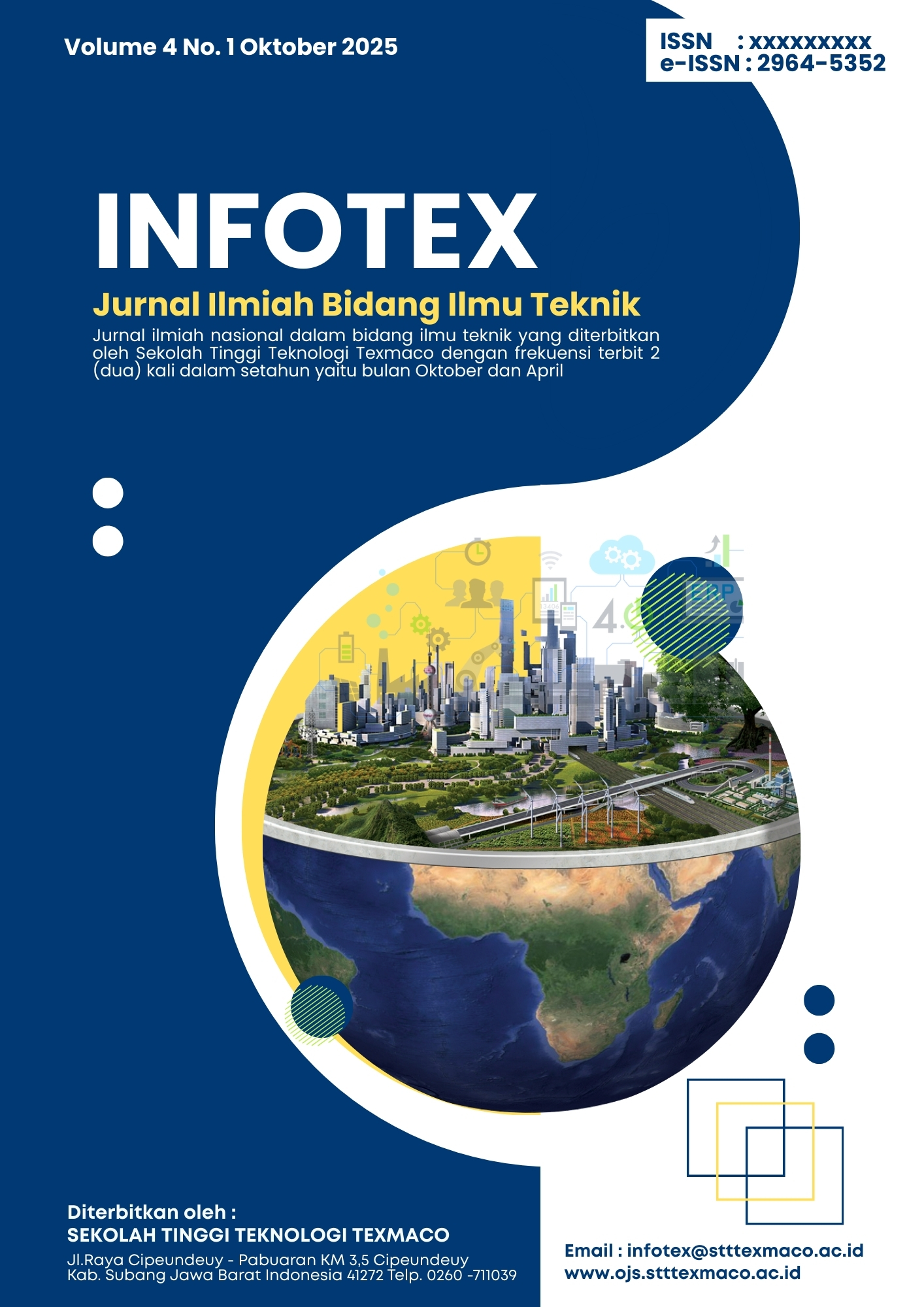Rancang Bangun Sistem Penyiraman Otomatis Berbasis Iot (Internet Of Things) Pada Penyemaian Bibit Tanaman
Keywords:
IoT (Internet of Things), automatic watering, soil moisture, ESP32, prototyping method.Abstract
Seed germination is a crucial stage in agriculture, strongly influenced by soil moisture. Manual watering is often inefficient due to time, labor demands, and inconsistency in maintaining optimal moisture levels. This study aims to design an automatic watering system based on the IoT (Internet of Things) that monitors and controls soil moisture in real-time. The research employed the prototyping method, which includes requirement analysis, system design, development, testing, and evaluation. The system utilizes an ESP32 microcontroller, soil moisture sensor, and water pump, which activates automatically when moisture drops below a set threshold. Sensor data is displayed through a PHP and MySQL-based web dashboard, enabling users to monitor and control the system remotely in both automatic and manual modes. Testing results show the system works effectively, responds well to environmental changes, improves water efficiency, and facilitates a modern, practical seed germination process.
References
[1] K. Trinanda, N. Aini, and U. Prabumulih, “Design And Construction Of The Land Services Administration Application At The Sukaraja District Office,” vol. 2, no. 03, pp. 170–175, 2024.
[2] M. Sistem, I. Manajemen, and D. Pengertian, “Jurnal Pendidikan dan Konseling,” vol. 5, pp. 4343–4349, 2023
[3] M. Sidiq and T. Rohayati, “Perancangan Aplikasi Penjualan Berbasis Web Dengan Metode Prototyping pada UMKM Sinar Terang Desa Pusakasari Kecamatan Cipaku,” Infotech journal, vol. 9, no. 1, pp. 76–83, Mar. 2023, doi: 10.31949/infotech.v9i1.4863.
[4] A. Istikomariah and R. Suparianto, “Rancang Bangun Aplikasi Pemesanan Motor Secara Kredit Pada Pt. Daya Anugrah Mandiri Prabumulih,” ITeCS (Indonesian J. Inf. Technol. Comput. Sciense), vol. 2, no. 03, pp. 142–147, 2024.
[5] P. Cubicart, “1) , 2) , 3),” vol. 2, pp. 675–687, 2024.
[6] N. A. Ramadhani, S. Nurainun, ) Fiza, I. Lubis, and N. Hasanah, “Perkembangan Biakan secara Vegetatif,” JINU), vol. 2, no. 4, pp. 1095–1102, 2025, doi: 10.61722/jinu.v2i4.6089.
[7] N. Khairunisa, H. Sunardi, and F. Antony, “Implementasi Sistem Alarm Dan Monitoring Kelembaban Tanah dan Suhu Terhadap Tanaman Cabai Berbasis Internet of Things
(Iot) Menggunakan Logika Fuzzy,” J. Intell. Networks IoT 95 Glob., vol. 2, no. 1, pp. 18–29, 2024, doi: 10.36982/jinig.v2i1.4437.
[8] A. Rofii, S. Gunawan, and A. Mustaqim, “Rancang Bangun Sistem Pengaman Pintu Gudang Berbasis Internet of Things (IoT) dan Sensor Fingerprint,” J. Kaji. Tek. Elektro, vol. 6, no. 2, pp. 70–76, 2022, doi: 10.52447/jkte.v6i2.5735.
[9] R. Y. Endra, Y. Aprilinda, Y. Y. Dharmawan, and W. Ramadhan, “Analisis Perbandingan Bahasa Pemrograman PHP Laravel dengan PHP Native pada Pengembangan Website,” EXPERT: Jurnal Manajemen Sistem Informasi dan Teknologi, vol. 11, no. 1, p. 48, Jun. 2021, doi: 10.36448/expert.v11i1.2012
[10] A. Priyangga and A. Febriyo Febriyansyah, “Sistem Penyiraman Otomatis Pada Kangkung Darat Sebagai Optimalisasi Pemeliharaan Berbasis Internet of Things (Iot),” Portaldata.org, vol. 2, no. 7, pp. 1–11, 2022.
Downloads
Published
How to Cite
Issue
Section
License
Copyright (c) 2025 sidiq Amroni, Dede Abdul Wahid

This work is licensed under a Creative Commons Attribution-ShareAlike 4.0 International License.






